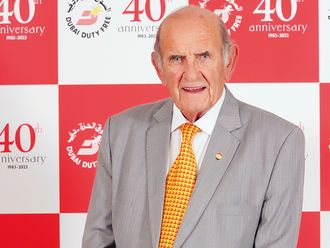How far the GCC economies and financial markets are linked to the rest of the world is a matter of debate and of ongoing revelation by events.
There is a case to be made that the specifics of the region’s resource endowment and its use, its variations on a business model, and the encompassing political and historical realities, are very particular to the region, so that separate paths of development and performance can be found according to internal rather than external motors — Dubai providing the most obvious example.
Equally, given the inevitable, relative lopsidedness of the Gulf’s economic evolution, with its dependence on generating receipts from energy exports — in addition to the very globalised nature of international finance, fickle capital and portfolio flows, and the susceptibility of all blocs to international trade — what happens elsewhere remains of critical influence and concern.
Oil and gas prices evidently predominate in this overall construct, largely determining the liquidity driving both domestic budgets and the accumulation of reserves via the balance of foreign payments. Notwithstanding diversification, it remains true that the state’s earnings from hydrocarbons substantiate governments’ outlays, which, with their considerable multiplier effects on activity, are decisive in the economic trend.
Fortunately for the stability of business planning and implementation, oil prices have been exhibiting a remarkably steady pattern, keeping to a range both satisfying the local need for revenues, and manageable in terms of the costs imparted to the world economy. Predictive analytical opinion is sufficiently divided as to suggest no reason to anticipate great change on that front.
Certain, other key variables of interest to those living and working here, though, may be on the cusp of a realignment, one that relates especially to the apparently imminent tightening of US monetary policy. Considering the reaffirmed pre-eminence of the dollar in collective liquidity since the global financial crisis, that has implications not only for asset markets but most immediately for dollar-based incomes and wealth, such as in the Gulf.
There is talk now of the dollar reaching a pivotal point, and beginning an ascent based not only upon the improvement of interest-rate differentials compared to overseas, but ironically on the diminution and removal of Federal Reserve support for the quickening American economy. As the evidence of escalating rebound creates appeal for investors both at home and abroad, which should anyway lift the greenback, ultimately the dollar is due to benefit from the emergency printing presses being switched off. It’s estimated now that quantitative easing will finally come to a halt this October.
Incidentally, those puzzled, for instance, about the strength of the key euro exchange rate against the dollar — when the Eurozone is struggling so much to overcome the blight of unemployment and severe, even deteriorating, national debt ratios — need only recognise the overwhelming importance of supply and demand (as to any economic or market discussion).
For better or worse in the longer run, the European Central Bank has simply resisted the scale of expansion of its balance sheet that the Fed has countenanced and aggressively engineered. Doubtless, the reserves positioning of China and others provides further explanation, but that’s still a secondary aspect.
In a world that wants dollars, having fewer of them around, relatively speaking (!), should raise their price. Whether the ECB itself eventually succumbs to QE (potentially amplifying the effect) is moot.
Last week’s monthly research insights from Emirates NBD exemplify the anticipation of likely dollar pick-up, referring to the Fed’s “relatively upbeat” assessment of prospects for growth and jobs. For some time the dollar has been “treading water” overall, but central bank chair Yellen’s latest comments, indicating that interest rates may rise sooner and faster than expected, are “signalling confidence”.
A resulting, modestly upward tendency at the shorter end of the yield curve would, in principle, represent a landmark turning of the corner in policy terms, without undermining the outlook for the economy, which might even need to be checked a touch from potential overheating. It would denote a step back towards normalisation of conditions that might well be beneficial for collective business and market mindsets, if an initial cooling of sentiment can be calmly achieved.
The counterpart issue in these circumstances is inflation, typically 3-4 per cent per annum still among the Gulf economies, enough seriously to erode living standards if sustained, and threatening to break out above the Fed’s 2 per cent target in the States.
Devotees of the foreign exchange markets will know that, with the consensus mood already built in, a climbing dollar (and its useful knock-ons for the GCC currencies, for all those interested) cannot be taken for granted, especially if the inflation danger registers significantly by way of a sell-off in the bond market, perhaps with a stagflationary hint to proceedings.
By default, though, we might reasonably take a firmer, trade-weighted dollar as a base case of expectation.












